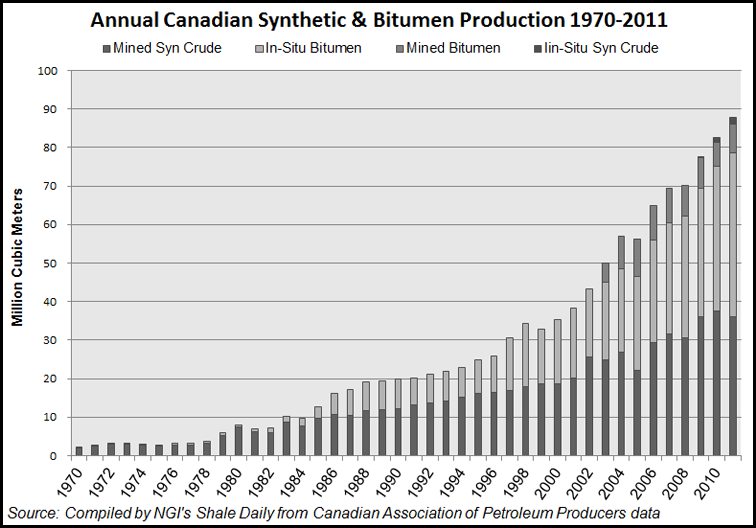NGI Archives | NGI All News Access
Athabasca Oil Sands Project Output Hits 255,000 Barrels Daily
Royal Dutch Shell plc, which operates the Athabasca Oil Sands Project (AOSP), said late Monday its oilsands operations have achieved a production milestone of 500 million bbl since production began in 2003. Current production capacity has reached 255,000 b/d, Shell said.

“This is a tremendous achievement for Shell’s oilsands business,” said Shell heavy oil chief John Abbott. “This milestone is the result of the hard work and dedication of many thousands of employees and contractors. The oilsands are a secure, reliable source of energy for North America and an economic engine which drives employment, training and business development across Canada and beyond.”
Shell’s focus now is to further improve operational yields and reliability, followed by adding more capacity through debottlenecking.
Shell Canada Energy is 60% owner/operator of AOSP. Chevron Canada Ltd. and Marathon Oil Corp. each have a 20% stake in the project. The AOSP includes the Muskeg River Mine and Jackpine Mine near Fort McMurray, AB, as well as the Scotford Upgrader near Edmonton.
According to Shell, Canada’s oilsands contain the world’s third largest resource after Saudi Arabia. Surface mining can extract about 20% of the oil and currently covers an area about one-third the size of the city of Los Angeles. Shell is one of more than 30 companies active in Canada’s oilsands, and the project represents about 2.5% of the company’s total production.
“In less than a decade, we have built an oilsands mining and upgrading business capable of delivering over a quarter of a million barrels per day,” said Abbott. “As our business has grown, we have listened to the concerns of Canadians and the global community.
“Our vision is to be the leading company in environmental performance. We recognize that we must do a better job in reducing the environmental impacts of our oilsands operations if we are to compete in a world rightly asking more of the energy it uses.”
This year Shell and its partners plan to take a final investment decision on advancing Quest, a proposed carbon capture and storage project, that would capture more than 1 million tons/year of carbon dioxide from the Scotford Upgrader, which then would be stored underground. If the project is approved, the Quest project is expected to help reduce the carbon footprint of the AOSP beginning in 2015.
© 2024 Natural Gas Intelligence. All rights reserved.
ISSN © 2577-9877 | ISSN © 2158-8023 |

